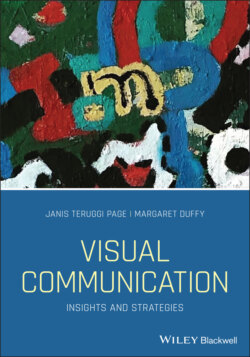Читать книгу Visual Communication - Janis Teruggi Page - Страница 51
Favored Strategy in Advertisements
ОглавлениеThere are lots of metaphors in advertising visuals. A running shoe ad that shows the shoe bursting into flames suggests that the wearer will run extremely fast. An ad for light beer may show a glass full of beer in the shape of a light bulb. Research shows that visual metaphors are often highly persuasive in advertising and contribute to people's quick understanding of complex ideas (Jeong, 2008). In addition, the persuasive messages made through visual metaphors appear to encourage greater agreement than with verbal or textual messages. Thus, to illustrate another common metaphor, using images to persuade may be a double‐edged sword in that they can be deployed for a variety of goals and intentions. As you can see, the metaphors we use are an important part of framing our messages.
Advertisers, both in print and video, rely heavily on metaphors because they point us to certain elements – we call this salience, or how much something stands out or draws our attention (Kress and van Leeuwen, 1998, p. 210). The salience factors that we are drawn to can include contrast, a familiar or iconic photo, the size and shape of an element, or a top left position in Western cultures. Often, you'll see a familiar image – perhaps a celebrity's photo – in a surprising or incongruous setting or position. The creator of the ad intends that you interpret the image in a specific way, drawing meaning from it.
Figure 2.6 The World Wildlife Fund uses a visual metaphor for global warming.
Source: Romolo Tavani/123RF.
The poster from the World Wildlife Fund (Figure 2.6) uses a powerful visual metaphor to highlight the risks of global warming. As you can see, the visual metaphor suggests the earth and ice cream share traits of melting fast. While the small wording below relays the message in the visual, the dramatic presentation of the melting earth cone against a stark black background dramatizes the danger in a memorable way. Again, we can see the power of visuals to persuade and provide real impact.
Visual metaphors may use various approaches including fear appeals of varying intensity that may be effective in changing behaviors. They also may cause psychological distress or harm, such as the use of graphic images illustrating child abuse or car injuries due to impaired driving. Visual metaphors also open the door to puffery: the practice of exaggerating claims in advertising (Richards, 2016; Thorson and Duffy, 2016). Richards discusses the notion that some critics consider puffery to be deceptive. Others say that statements or images such as “Budweiser is the king of beers” or a video showing a man wearing his Skechers shoes outrunning a cheetah aren't deceptive because they are in the realm of fantasy and thus are unlikely to mislead a consumer.
